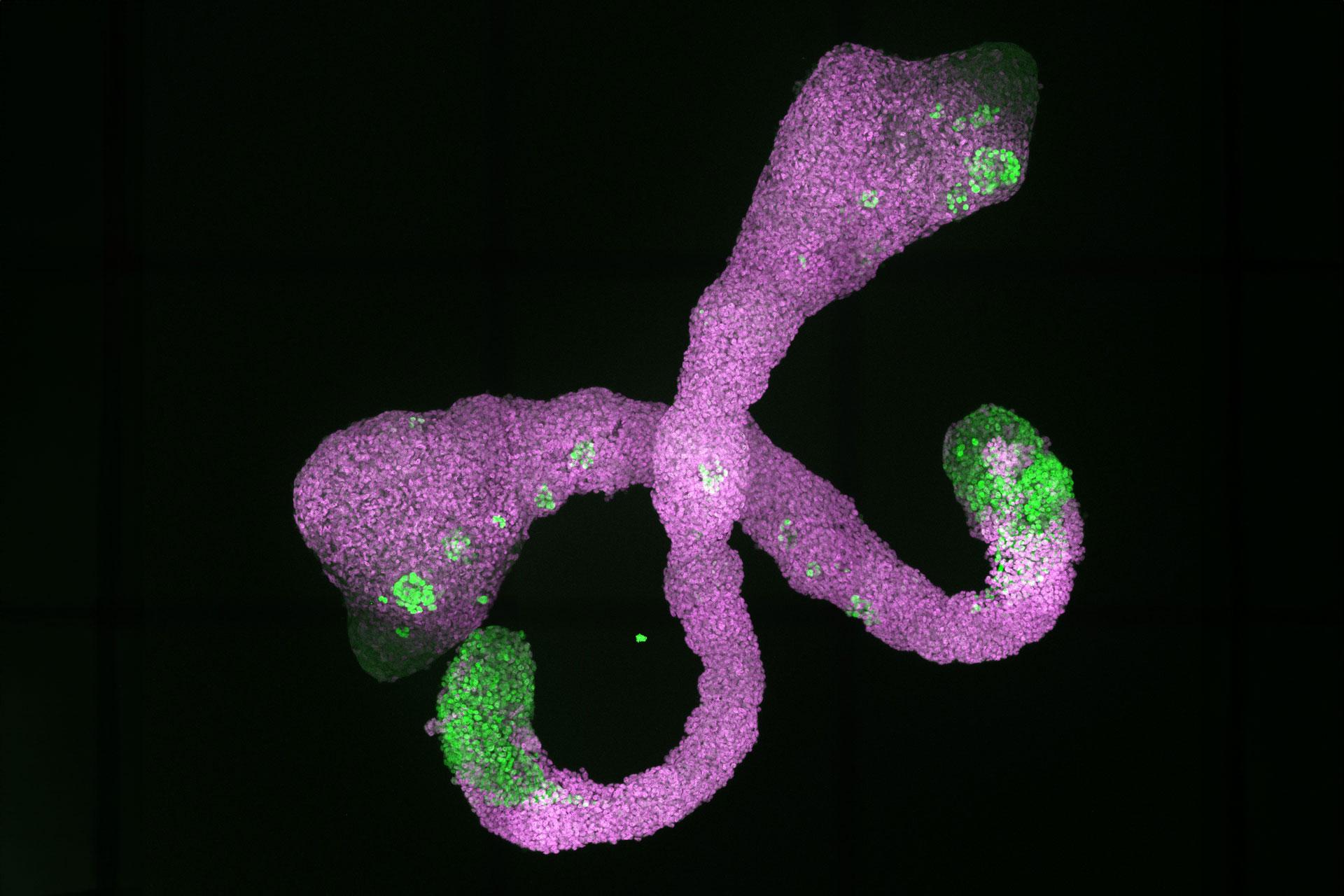Embryo models: a rapidly moving field

Stem cell-derived embryo models can be used to answer many questions to understand embryonic development and hold the promise to ensure drug safety during pregnancy in pre-clinical studies. However, a lot of research is still needed before then - Alexandre Mayran and his team are at the forefront of this research.
Before drugs are launched on the market, they have to be assessed for their effectiveness as well as their safety. This applies in particular to pregnant patients: It must be ensured that drugs do not harm the unborn child in the womb. To date, these tests are carried out using cell models and animal experiments.
Another option could be added in the future. Around 100 research groups worldwide are currently conducting research into embryo models: These so-called stembryos are three-dimensional cell structures that are developed in the laboratory from embryonic stem cells. A wide range of stembryos exist, in mouse, human as well as other species, each allowing modeling different steps of embryonic development.
No embryos
Stembryos are not embryos, as they cannot develop into viable embryos. However, they imitate embryonic structures and with their help, researchers can investigate many interesting questions concerning the development of embryos.
One of the research groups working on this topic is that of Alexandre Mayran at the EPF Lausanne. "Embryo models are relatively new, they've only been around for a few years," says Mayran. "But the development is rapid. There are now approximately 25 different models each with their advantages and limits. It is crucial for researchers to identify which model are best suited for one’s research, as well as identifying their limits. We’re developing a resource dedicated to this purpose and are identifying strategies to circumvent their current limits".
Realistic assessment
As part of the National Research Programme NRP 79 Advancing 3R, Mayran's team is investigating, among other things, what possibilities these models offer to replace animal experiments in the future or at least reduce their numbers. In order to achieve this, it is important to take a realistic look at the various models: Which questions can the models answer? Which ones might they answer in a few years' time? "Only with a realistic assessment of the opportunities and risks of these models will they be used in the future," explains Mayran.
There is currently an intensive debate in the research community as to which models are most suitable. Two paths are currently being pursued: On the one hand, there are models that better represent the reality of embryonic development, but this comes at the expense of reproducibility. This means that in their current state, these models are inefficient to produce, thereby reducing their usefulness for research.
On the other hand, other models represent a more simple, less complex version of the embryo, but these have a robust reproducibility. “Of course, the ideal would be a model that is as close to reality as possible, has good reproducibility and is easy to use”, says Mayran.
Ethical and legal questions
In addition to the technical challenges, there are also various ethical and legal issues surrounding embryo models. For example: these embryo models are no longer stem cells, but they are not embryos either, as they are not viable. How should they be categorized ethically? And what do they count as legally?
“It is important for us that the relevant questions are clarified,” says Mayran, “because we are aware of the challenges in dealing with these models.” The scientific and ethical questions will need to be solved, because in the future, these models might become very useful: for example to study patient infertility or to grow organs in vitro for transplantation.
